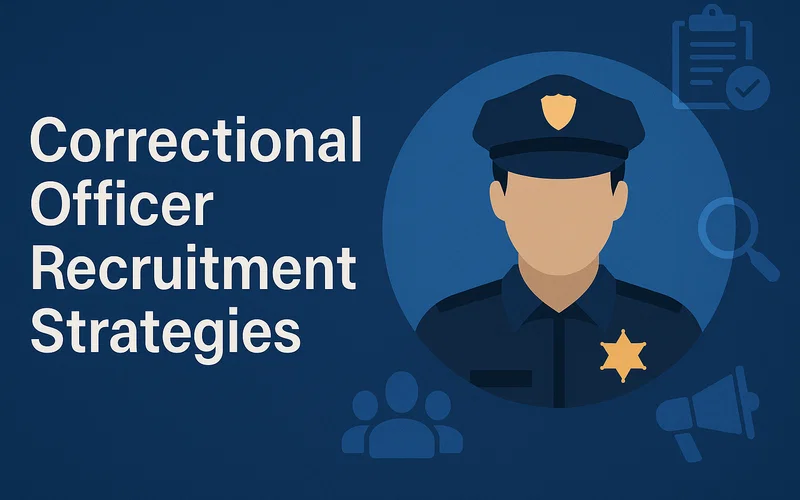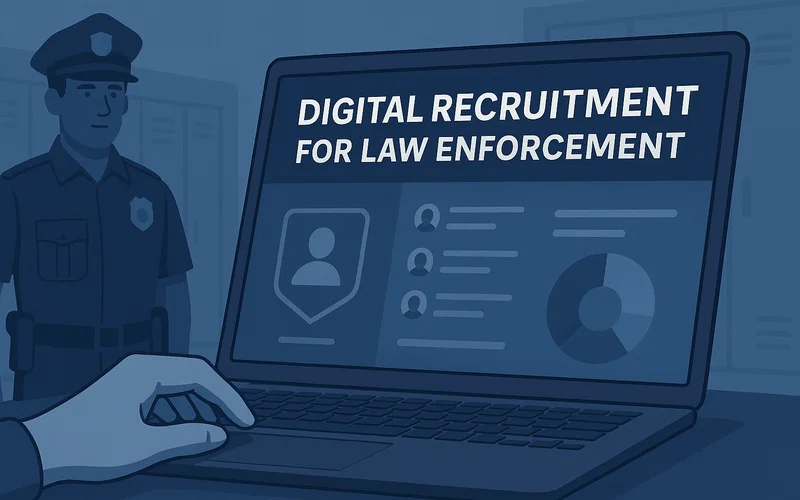
Below is your comprehensive police recruitment checklist covering 12 critical phases with 57 actionable items. This systematic approach ensures your agency addresses every element of modern law enforcement hiring, from strategic planning through final onboarding.
How to Use This Checklist
This checklist is organized by recruitment phase, with designated responsible parties for accountability. Use the status column to track completion and identify bottlenecks in your hiring pipeline. Each phase builds upon the previous one to create a comprehensive recruitment ecosystem.
Strategic Planning Phase
Successful recruitment starts with deliberate planning. Assign a dedicated recruitment officer to lead efforts, develop a comprehensive plan with measurable goals, and establish metrics to track success. Review your eligibility requirements to ensure they reflect modern standards without compromising quality. Set clear timelines for applications and testing to manage candidate expectations.
Key Actions:
- Assign dedicated recruitment officer
- Develop comprehensive recruitment plan with measurable goals
- Establish tracking metrics for recruitment funnel
- Review eligibility requirements for modern relevance
- Set clear application and testing timelines
Digital Presence & Marketing
Your online presence is your 24/7 recruiter. Create a dedicated recruitment website separate from your city site to control messaging and showcase what makes your department unique. Develop an engaging overview video that gives candidates an authentic look at your culture. Establish active social media accounts and implement targeted digital advertising to reach qualified candidates where they spend their time.
Key Actions:
- Create dedicated recruitment website
- Develop department overview video
- Establish active social media presence
- Implement targeted digital advertising campaigns
- Showcase department culture and values online
Community & Educational Engagement
Building relationships creates recruitment pipelines. Participate in community events, partner with local organizations, and create cadet or explorer programs that introduce young people to law enforcement. Establish partnerships with high schools, colleges, and universities to develop academic pathways into policing. Attend career fairs and offer ride-alongs to demystify the profession.
Key Actions:
- Participate in community events regularly
- Partner with local organizations
- Create cadet or explorer programs
- Establish high school and college partnerships
- Attend career fairs
- Offer ride-along programs
Process Optimization
Modern candidates expect efficiency. Implement rolling applications and conduct smaller, more frequent testing sessions instead of rigid annual schedules. Streamline your multi-phase process while maintaining standards. Reduce waiting times between phases to prevent losing candidates to competing departments.
Key Actions:
- Implement rolling application process
- Conduct frequent, smaller testing sessions
- Streamline multi-phase hiring process
- Reduce waiting times between phases
- Maintain quality standards while improving speed
Candidate Support & Mentoring
Personal connection drives retention in the recruitment pipeline. Assign recruiter mentors who act as coaches throughout the process, providing guidance, encouragement, and clear communication. Research shows this support is especially valuable for diverse candidates whose families may be skeptical of law enforcement careers. Offer fitness preparation resources and maintain regular contact to keep candidates engaged.
Key Actions:
- Assign recruiter mentors to candidates
- Provide fitness preparation resources
- Maintain regular candidate communication
- Offer guidance throughout hiring process
- Support diverse candidates and their families
Legal Requirements & Testing
Your checklist must capture all statutory requirements: minimum age verification (21 for sworn officers in most jurisdictions), high school diploma or GED confirmation, and citizenship verification. Conduct comprehensive background checks including criminal history (NCIC), driving records, credit checks, and employment verification. Administer required testing including written exams, physical fitness assessments, oral boards, polygraphs, and psychological evaluations.
Key Actions:
- Verify minimum age requirements (typically 21)
- Confirm high school diploma or GED
- Verify citizenship status
- Conduct NCIC criminal history check
- Review driving records
- Perform credit checks
- Verify employment history
- Administer written examinations
- Conduct physical fitness assessments
- Complete oral board interviews
- Perform polygraph examinations
- Conduct psychological evaluations
Medical & Final Clearance
Complete medical examinations verify candidates can safely perform essential job functions. Verify vision and hearing requirements and conduct drug screening. Process fingerprints at both FBI and state levels. Upon successful completion, issue conditional job offers and complete onboarding paperwork.
Key Actions:
- Complete comprehensive medical examination
- Verify vision and hearing requirements
- Conduct drug screening
- Process FBI fingerprints
- Process state-level fingerprints
- Issue conditional job offer
- Complete onboarding paperwork
Building a Recruitment Culture
The most effective agencies make recruitment everyone's responsibility. Involve all department members in outreach efforts and develop competitive compensation packages with signing bonuses and relocation assistance. Create clear career advancement pathways and continuously track recruitment funnel metrics to identify improvement opportunities.
Key Actions:
- Involve all department members in recruitment
- Develop competitive compensation packages
- Offer signing bonuses and relocation assistance
- Create clear career advancement pathways
- Track recruitment funnel metrics continuously
- Identify and address bottlenecks
Implementing Technology Solutions
Modern recruitment requires modern tools. Consider implementing applicant tracking systems specifically designed for law enforcement that can manage the complex, multi-phase hiring process. Automated communication keeps candidates engaged during lengthy background checks. Analytics help identify where candidates drop out of your pipeline and why.
Key Actions:
- Implement law enforcement-specific ATS
- Automate candidate communication
- Track pipeline analytics
- Monitor application sources
- Measure time-to-hire metrics
Diversity & Inclusion Initiatives
Building a department that reflects your community requires intentional effort. Develop targeted outreach to underrepresented groups, create mentorship programs connecting diverse candidates with officers, and review your process for unintentional barriers. Highlight diverse officers in recruitment marketing and establish partnerships with organizations serving diverse communities.
Key Actions:
- Develop targeted diversity outreach
- Create diverse mentorship programs
- Review process for unintentional barriers
- Highlight diverse officers in marketing
- Partner with community organizations
Retention Planning
Recruitment doesn't end at hire—it extends through academy and field training. Develop academy support programs that identify struggling recruits early and provide intervention resources. Create peer support networks and assign field training officers who model department values. Track academy and field training attrition rates to identify systemic issues.
Key Actions:
- Develop academy support programs
- Identify struggling recruits early
- Provide intervention resources
- Create peer support networks
- Assign quality field training officers
- Track attrition rates through training
Continuous Improvement
The best recruitment programs evolve based on data and feedback. Survey candidates about their experience—both those hired and those who declined offers. Track which recruitment sources produce the best officers, not just the most applicants. Benchmark against similar-sized departments and stay current with industry best practices.
Key Actions:
- Survey all candidates about their experience
- Track quality of hires by recruitment source
- Benchmark against peer agencies
- Stay current with industry best practices
- Adjust strategies based on data
Transform Your Recruitment Process
This systematic approach transforms recruitment from reactive to strategic, helping your agency compete effectively for qualified candidates in today's challenging environment. By implementing these 12 phases and 57 actionable items, you create a comprehensive recruitment ecosystem that attracts, evaluates, and retains exceptional law enforcement professionals.
Ready to Fill Every Vacancy?
Respond Capture helps correctional agencies recruit smarter, faster, and more efficiently. Our platform and services automates applicant communication, tracks every stage of the hiring pipeline, and delivers real-time analytics so you can stay fully staffed.
👉 Qualifying agencies can save 20% off their first-year software subscription.
Don't wait for the next staffing crisis—get ahead of it.
Schedule a demo by contacting us at contact@respondcapture.com



